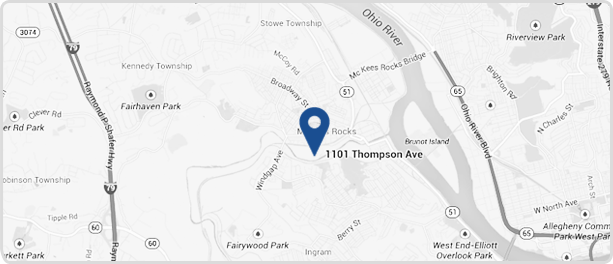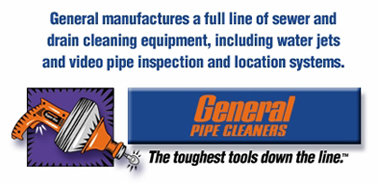Glossary
Those coils which are free to deflect under load.
The relative position of the plane of the hooks or loops of extension springs to each other.
Heating of electroplated springs to relieve hydrogen embrittlement.
See Stress Relieve.
Bowing or lateral deflection of compression springs when compressed, related to the slenderness ratio (L/D).
Some draftsmen include a note on all drawings reading, "Remove all burrs." This can result in additional cost without adding value to the part. Burrs are produced, to some degree or other, by many of the operations used in manufacturing springs.
Burrs created in the cutting-off operation are often harmless and it would be unwise to pay for their removal. Burrs arising from other operations may sometimes be controlled within limits as to size, shape, and location. If we can agree upon such limits, they may be a chance for significant savings.
Ends of compression springs where pitch of the end coils is reduced so that the end coils touch.
As with closed ends, except that the end is ground to provide a flat plane.
See Solid Height.
Coiled with adjacent coils touching.
See Pitch.
One of the most neglected factors that can adversely affect spring performance is corrosion. Often microscopic corrosion is the origin of spring failure, but its presence goes undetected, and the cause of failure is attributed to something else.
Springs made of uncoated steel must be given some kind of corrosion protection, even during manufacturing, shipping, and storage. The degree of protection required after installation is another matter and depends upon the nature of the application. We can help you with this problem if we know the environment in which the spring will be operating.
Motion of spring ends or arms under the application or removal of an external load (P).
Maximum stress to which a material may be subjected without permanent set.
Maximum stress at which any given material will operate indefinitely without failure for a given minimum stress.
Angle between the arms of a torsion spring when the spring is not loaded.
The overall length of a spring in the unloaded position.
The lowest inherent rate of free vibration of a spring itself (usually in cycles per second) with ends restrained.
See Rate.
Fixturing a spring at elevated temperature to minimize loss of load at operating temperature.
The spiral form (open or closed) of compression, extension, and torsion springs.
Load is proportional to displacement.
Open loops or ends of extension springs.
See Heat Setting.
Some draftsmen include a note on all drawings reading, "Remove all burrs." This can result in additional cost without adding value to the part. Burrs are produced, to some degree or other, by many of the operations used in manufacturing springs.
Burrs created in the cutting-off operation are often harmless and it would be unwise to pay for their removal. Burrs arising from other operations may sometimes be controlled within limits as to size, shape, and location. If we can agree upon such limits, they may be a chance for significant savings.Whenever a carbon steel is pickled in preparation for plating or during some electroplating processes, hydrogen can become absorbed into the material. While cracks can develop in the pickling or plating bath, more often then they appear when the plated springs are in service.
The hazard of hydrogen embrittlement becomes more acute when there is (1) high stress concentration, (2) high Rockwell hardness, or (3) high carbon content. Tempered materials are particularly susceptible.
To relieve embrittlement, the springs must be baked immediately after plating to drive the hydrogen out of the material. Hydrogen absorbed in electroplating or pickling of carbon steels, tending to make the spring material brittle and susceptible to cracking and failure.
The mechanical energy loss that always occurs under cyclic loading and unloading of a spring, proportional to the area between the loading and unloading load-deflection curves within the elaastic range of a spring.
The force that tends to keep the coils of an extension spring closed and which must be overcome before the coils start to open.
The force applied to a spring that causes a deflection (F).
Coil-like wire shapes at the ends of extension springs that provide for attachment and force application.
Outside spring diameter (O.D.) minus one wire diameter (d).
Coefficient of stiffness used for torsion and flat springs.
Coefficient of stiffness used for torsion and flat springs.
See Torque.
End of a compression spring with a constant pitch for each coil.
"Open ends, not ground" followed by an end grinding operation.
Acid treatment of stainless steel to remove contaminants and improve corrosion resistance.
A material that is deflected so far that its elastic properties have been exceeded and it does not return to its original condition upon release of load is said to have taken a "permanent set."
The distance from center to center of the wire in adjacent active coils (recommended practice is to specify number of active coils rather than pitch).
The ratio of the strain in the traverse direction to the strain in the longitudinal direction.
See Remove Set..
Change in load per unit deflection, generally given in pounds per inch.
Process of closing to solid height a compression spring which has been coiled longer than the desired finish length, so as to increase the apparent elastic limit.
Stresses included by set removal, shot peening, cold working, forming or other means. These stresses may or may not be beneficial, depending on the application.
Permanent distortion which occurs when a spring is stressed beyond the elastic limit of the material.
A cold-working process in which the material surface is peened to induce compressive stresses and thereby improve fatigue life.
Ratio of spring length (L) to mean coil diameter (D).
Length of a compression spring when under sufficient load to bring all coils into contact with adjacent coils.
Ratio of mean coil diameter (D) to wire diameter (d).
As with most components, no matter how much time and effort is spent to ensure long life, it is practically impossible to guarantee that there will be no failures in a given production lot of springs. In addition to breakage, loss of load and distortion may also be failures.
Predicting spring life is not an exact science. Nevertheless, spring life can be extended by careful design and selection of material, as well as quality control of both material and production.
See Closed and Ground Ends.
See Closed Ends.
Angular deviation between the axis of a compression spring and a normal to the plane of the ends.
As in the Squareness of Ends, except with the spring under load.
The difference in operating stresses at minimum and maximum loads.
To subject spring to low-temperature heat treatment so as to relieve residual stress.
Since it is an economic consideration, specified tolerances should be generous enough to permit the fabrication of acceptable springs by ordinary production methods.
Also, it,s smart to apply tolerances only on functional requirements and dimensions. This gives us an opportunity to compensate for variations in the size and mechanical properties of all spring materials.
If your standard drawing forms have tolerance boxes for machined dimensions, they are almost sure to be impractical for springs. We suggest you delete them and apply realistic tolerances to spring requirements.
A twisting action in torsion springs which tends to produce rotation, equal to the load multiplied by the distance (or moment arm) from the load to the axis of the spring body.
Number of active coils (n) plus the coils forming the ends.
A factor to correct stress in helical springs effects of curvature and direct shear.








